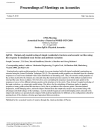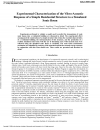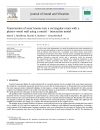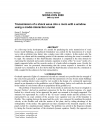This paper presents a numerical model to predict the vibro-acoustic responses at low frequencies of simplified residential structures exposed to sonic booms. The model is validated experimentally in a companion paper. The dynamics of the fluid-structure system, including their interaction, is computed in the time domain using a modal-decomposition approach. In the dynamic equations of the system, the structural displacement is expressed in terms of summations over the “in vacuo” modes of vibration.







